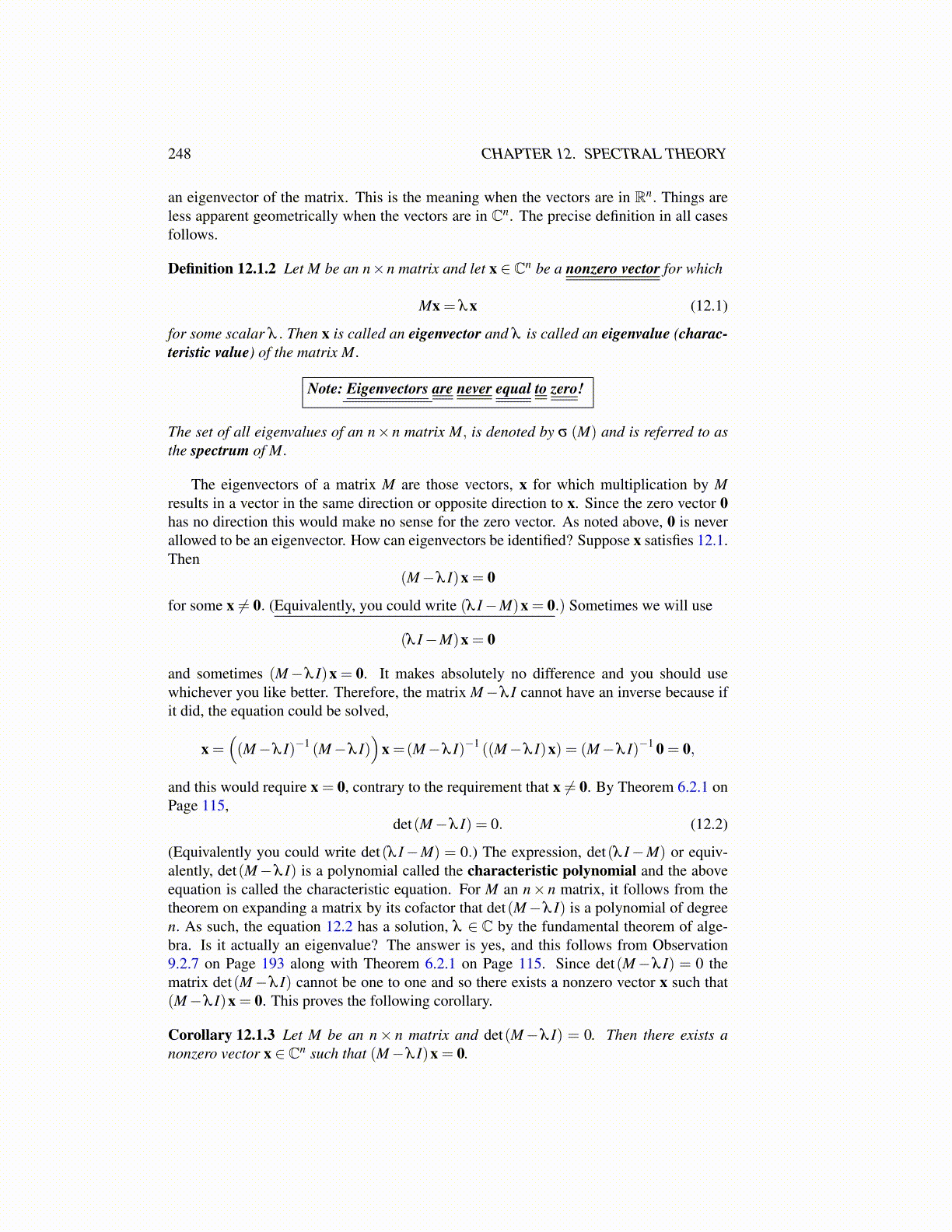
248 CHAPTER 12. SPECTRAL THEORY
an eigenvector of the matrix. This is the meaning when the vectors are in Rn. Things areless apparent geometrically when the vectors are in Cn. The precise definition in all casesfollows.
Definition 12.1.2 Let M be an n×n matrix and let x ∈ Cn be a nonzero vector for which
Mx = λx (12.1)
for some scalar λ . Then x is called an eigenvector and λ is called an eigenvalue (charac-teristic value) of the matrix M.
Note: Eigenvectors are never equal to zero!
The set of all eigenvalues of an n× n matrix M, is denoted by σ (M) and is referred to asthe spectrum of M.
The eigenvectors of a matrix M are those vectors, x for which multiplication by Mresults in a vector in the same direction or opposite direction to x. Since the zero vector 0has no direction this would make no sense for the zero vector. As noted above, 0 is neverallowed to be an eigenvector. How can eigenvectors be identified? Suppose x satisfies 12.1.Then
(M−λ I)x = 0
for some x ̸= 0. (Equivalently, you could write (λ I−M)x = 0.) Sometimes we will use
(λ I−M)x = 0
and sometimes (M−λ I)x = 0. It makes absolutely no difference and you should usewhichever you like better. Therefore, the matrix M−λ I cannot have an inverse because ifit did, the equation could be solved,
x =((M−λ I)−1 (M−λ I)
)x =(M−λ I)−1 ((M−λ I)x) = (M−λ I)−1 0 = 0,
and this would require x = 0, contrary to the requirement that x ̸= 0. By Theorem 6.2.1 onPage 115,
det(M−λ I) = 0. (12.2)
(Equivalently you could write det(λ I−M) = 0.) The expression, det(λ I−M) or equiv-alently, det(M−λ I) is a polynomial called the characteristic polynomial and the aboveequation is called the characteristic equation. For M an n× n matrix, it follows from thetheorem on expanding a matrix by its cofactor that det(M−λ I) is a polynomial of degreen. As such, the equation 12.2 has a solution, λ ∈ C by the fundamental theorem of alge-bra. Is it actually an eigenvalue? The answer is yes, and this follows from Observation9.2.7 on Page 193 along with Theorem 6.2.1 on Page 115. Since det(M−λ I) = 0 thematrix det(M−λ I) cannot be one to one and so there exists a nonzero vector x such that(M−λ I)x = 0. This proves the following corollary.
Corollary 12.1.3 Let M be an n× n matrix and det(M−λ I) = 0. Then there exists anonzero vector x ∈ Cn such that (M−λ I)x = 0.